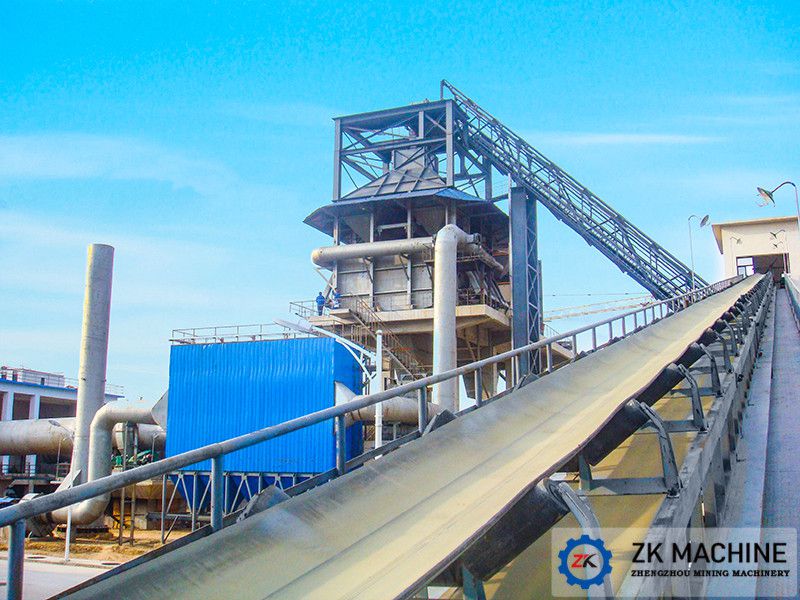Wear form and maintenance measures of conveyor belt
Date:2021-11-22 16:23:40
Author:admin
Views:
166
Once the belt conveyor belt becomes thin due to wear and tear, it will cause failures such as reduced strength, shortened service life, and belt deviation. The main types of belt wear and maintenance measures are as follows:
1. Wear between the feeding chute and the conveyor belt surface
The feed chute is in close contact with the conveyor belt, which is the main manifestation of the wear of the conveyor belt. There are three reasons for its formation:
1) The material has an impact on the conveyor when feeding, especially when the angle between the material and the direction of the conveyor belt is greater than or equal to 90°, it will cause strong wear on the conveyor belt
2) In order to prevent the material from being scattered, the contact between the guide plate and the conveyor belt is too tight, causing the conveyor belt to wear
3) The material contains long hard objects stuck in the feeding port, abraded or scratched the conveyor belt
Maintenance measures:
1) In order to minimize the wear of the feeding port conveyor belt, the structure design of the feeding port guide groove should be reasonable so that the material continuously falls in the center of the conveyor belt.
2) The equivalent free fall height of the material falling on the conveyor belt is less than 1m, so that the impact force on the conveyor belt is as small as possible
3) The feeding section is kept level, or the slope is not more than 8°, and the feeding section is equipped with buffer rollers or the trough-shaped rollers are arranged in a dense manner.
4) The chute and the material guide chute should be firmly fixed so as to be positioned correctly against the conveyor belt. The bottom of the material guide chute cannot be too tight against the conveyor belt.
2. Wear between the reversing roller and the conveyor belt
The wear is mainly due to the debris entering between the reversing roller and the conveyor belt, which adheres to the roller, causing the local radius of the reversing roller to deform and cause wear
Maintenance measures:
1) Install a scraper near the surface of the reversing drum. The scraper and the receiving plate are integrally welded together. The receiving plate is connected to the conveyor frame by bolts, and the scraper and the roller are inclined to a certain extent. Angle, increase scraping capacity.
2) Install a V-type cleaner at the front of the reversing drum, and install rubber straps on the contact end of the cleaner and the conveyor belt to reduce the wear of the belt.
3. The local wear caused by the deviation of the conveyor belt
Conveyor belt deviation is a common fault of conveyors, which mainly refers to the deviation of the centerline of the conveyor belt from the longitudinal centerline of the conveyor when the conveyor is running. The deviation of the conveyor belt is mainly manifested in the following points:
1) The center line of the conveyor head and the tail roller are not parallel, so that the tension on both sides is inconsistent, and the conveyor belt moves to one side.
2) The quality problems of the conveyor belt itself and the serious abrasion of the edge of the belt will cause the tension on both sides of the conveyor belt to be inconsistent, causing deviation;
3) Conveyor belt installation and joints are not correct, causing the conveyor belt to have a deflection force
4) Improper feeding of the conveyor belt, resulting in uneven force on the conveyor belt and deviation
5) The roller sticks to the material and feeds the conveyor belt improperly, causing uneven force on the conveyor belt and causing deviation
Maintenance measures:
1) The head and tail rollers are not parallel, and they run tight but not loose. If the centerline of the entire conveyor is offset, the centerline must be re-calibrated; if it is only slightly deviated, the bearing seat on the tight side can be tightened
2) Due to the uneven bending of the conveyor belt or the improper joints, the conveyor belt is not uniformly stressed, causing deviation, and the conveyor belt should be cut straight and re-glued or nailed.
3) The axis of the roller set is not perpendicular to the center line of the conveyor belt, which results in the phenomenon that the conveyor belt does not run forward after running. The advancing direction is skewed by 2°~4°. Generally, it is necessary to adjust several rollers to correct the deviation.
4. The wear between the roller and the conveyor belt
There are several reasons for the wear between the roller and the conveyor belt:
1) The causes of wear between the roller and the conveyor belt mainly include installation errors, structural deformation of the roller frame, and roller corrosion, etc.
2) Improper installation of roller frame
3) The self-aligning roller is worn out due to deviation correction
Maintenance measures:
1. First, ensure that the entire conveyor is on a centerline; secondly, the inclined rollers on both sides and the middle horizontal roller have the same inclination angle, and all the middle rollers are on the same horizontal surface, so that all the rollers and the conveyor belt are in good condition. Contact to ensure uniform force on each roller.
2. Minimize the use of self-aligning rollers
3. Strengthen the daily maintenance of the rollers, and replace the damaged rollers in time
Conveyor belt wear is one of the more common faults, but if you don't pay attention to it, it will often cause more serious accidents. Therefore, taking corresponding measures to reduce the wear of the conveyor belt and prolong the service life is of practical significance to the normal operation of the belt conveyor and the reduction of maintenance costs.

